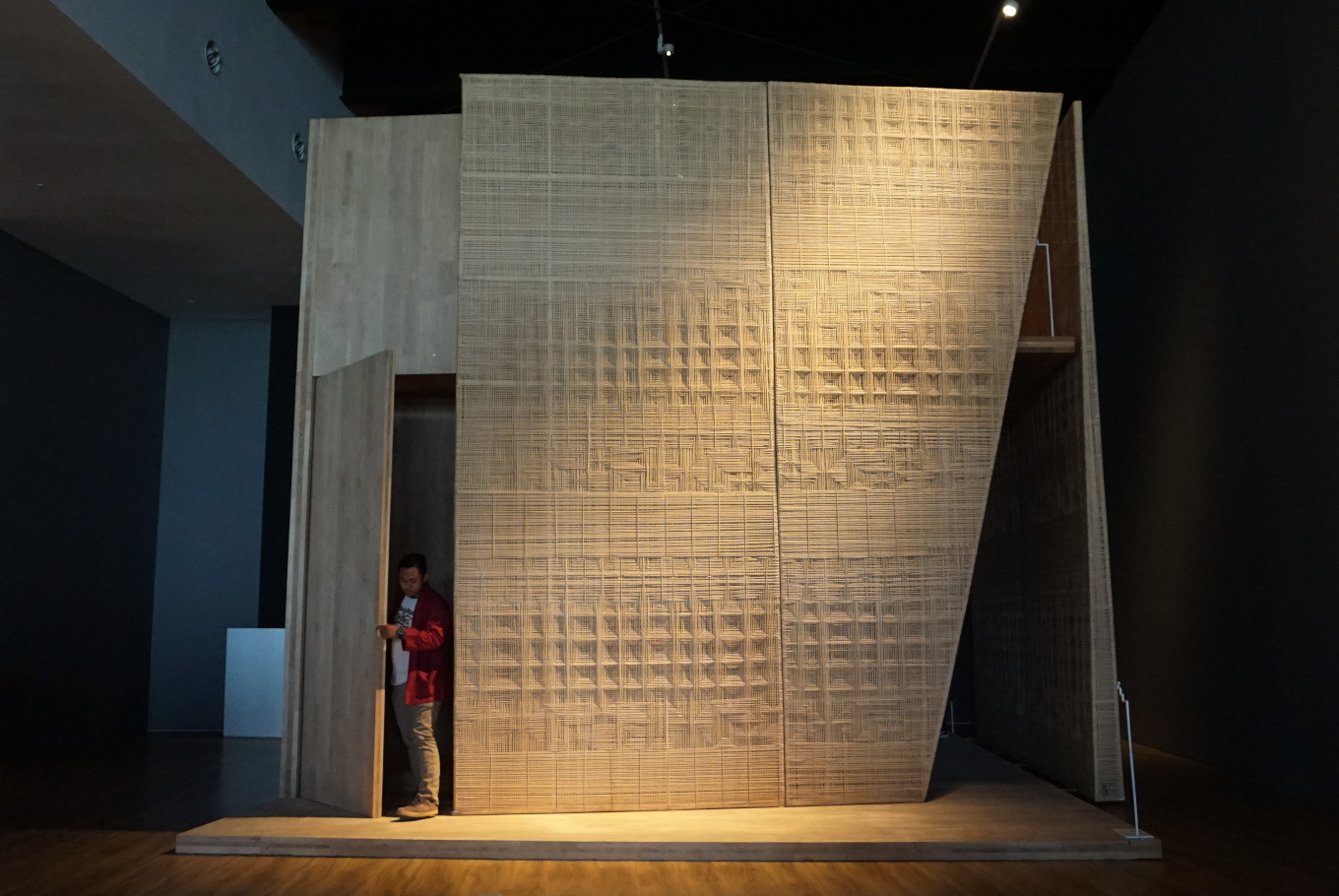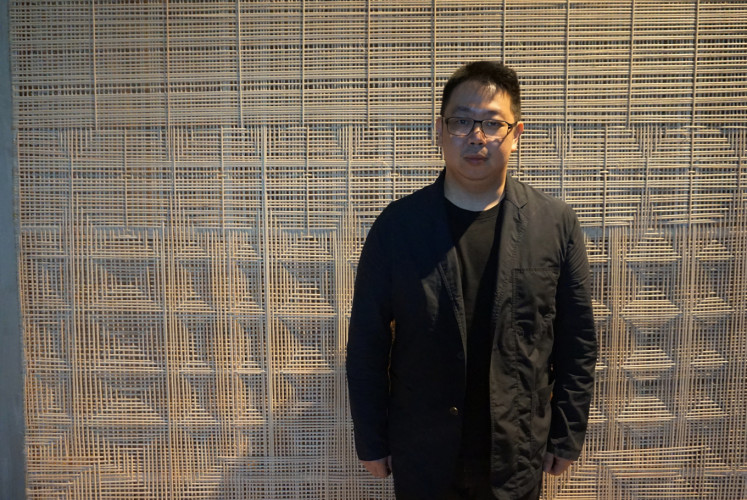Popular Reads
Top Results
Can't find what you're looking for?
View all search resultsPopular Reads
Top Results
Can't find what you're looking for?
View all search resultsLim Masulin strives to bring weaving into the future
The founder of weaving technology company BYO Living, Lim Masulin, talks about the development of weaving using sustainable materials and his latest work, Elevation.
Change text size
Gift Premium Articles
to Anyone
In the hands of Lim Masulin, weaving techniques can be applied to architecture as well as interior design.
The founder of weaving technology company BYO Living doesn't stop there though, as he also plans to merge weaving and technology – but still in a nature-friendly way.
“We’re in Industry 4.0 and we’re currently teaming up with a German university to use robotic engineering to create a detailed work of art,” Lim recently told The Jakarta Post in Jakarta. “We also have clients who want to use carbon fiber and metal, as well as create a movable weaving [product].
So, it is an era to bring weaving to the future using computerization, while still maintaining the traditional taste as part of our identity.”
Read also: The weaving wonders of Masulin Lim
Prior to gaining success, Lim initially struggled to convince people to include weaving into their property and to show them that weaving is as sturdy as concrete or that something eco-friendly must be expensive.
“I told them I’ll guarantee [the building will] 15 years. The price is affordable and can be used as an [eco-friendly] solution for their future generation,” Lim said.
At West Jakarta's Museum of Modern and Contemporary Art in Nusantara (MACAN), an exhibition titled Matter and Place is currently on display until July 21. One of its installations, Elevation, is by Indonesian architect Andra Matin in collaboration with BYO Living, which was recognized with a special mention at the 2018 International Architecture Exhibition-La Biennale di Venezia.
Lim Masulin poses in front of 'Elevation' installation at Museum Macan in West Jakarta on April 12, 2019. (JP/Ni Nyoman Wira)Lim praised Andra as one of the first Indonesian architects to dare to use weaving in his buildings.
“He gave us freedom and space during the collaboration,” Lim said. “Aside from freedom, he also allowed us to unleash our strength.”
They only had three to four months to weave rattans for the installation and were asked to keep it a secret by the event organizer. Lim said they were between ecstatic, panic and worry during that time.
“[The work] was for Andra, but we’re representing Indonesia,” Lim said.
He used rattan from Kalimantan for Elevation. Such rattan will continue to grow after being cut down and has silica on its epidermis.
Lim had done some experiments on the material and it is proven to be sturdy and mold resistant.
“It has a strong fiber and, in certain cases, is similar to steel-based wire rope. It’s also stronger than bamboo in terms of tensile strength,” said Lim, adding that natural material was usually more superior compared to man-made ones.
Read also: Lim Masulin, bringing Indonesia's weaving craftsmanship to the world stage
A close-up of the weaving used in 'Elevation' which uses six different techniques based on traditional hand-woven fabrics across the archipelago, including Kalimantan, Sumatra and Java. (JP/Ni Nyoman Wira)Lim described his weaving for Elevation “holographic” as the team used six different techniques based on traditional hand-woven fabrics across the archipelago, including Kalimantan, Sumatra and Java.
Apart from its aesthetic aspect, holographic also has good wind and light circulation and different depths.
Established in 2008, BYO Living is currently collaborating with Japanese architect Kengo Kuma, who designed the 2020 Tokyo Olympic Stadium, to build a tropical house that uses woven blinds as its walls.
“He wants the blinds to have curves,” he said. “We merge our weaving ability with woven iron, so it’s 90 percent rattan and 10 percent iron. It doesn’t have a basic structure, so it’s very light.”
BYO Living is also working with Dutch architect Lucas “Rem” Koolhaas for a hotel project in Bali that uses recycled plastic bottles for its ceiling, as well as Andra Matin for a villa that has unique light circulation. (kes)













